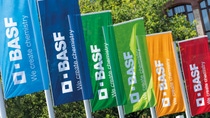Chemistry and Sustainability: A Perfect Match
Media
Research Press Conference
Humanity is faced with major challenges: climate change, ever-scarcer resources, increasing pressure on ecosystems and a growing global population. Solutions for a sustainable future are needed now more urgently than ever before – and chemistry can play a key role here.
With innovative products and technologies, chemistry can enable greater sustainability in all areas of life and therefore accelerate the necessary transformation. At our Research Press Conference this year, we want to share with you five specific examples of how BASF’s R&D leads to innovative products that support our customers on their journeys to greater sustainability.
Innovations based on chemistry can help to overcome many of the challenges of our time. Products, solutions and technologies from BASF pave the way to greater sustainability in almost all areas of life.”

Recording of the presentation
Building better roads
Roads worldwide are subject to intensifying stress, including increased heavy-duty traffic and more extreme climate conditions. As a result, roads usually need to be replaced after 10 to 12 years. With B2Last® (Bitumen to Last), BASF has developed an innovative bitumen additive that improves the durability of roads and reduces the carbon footprint during construction.
More on this from Dr. Dag Wiebelhaus, Head of Global Product Innovation Monomers

Recording of the presentation
Flying with improved aerodynamics
When an airplane has lower friction resistance in the air, its fuel consumption and therefore its CO2 emissions also decrease. Since the 1980s, researchers have been looking for solutions to reduce aerodynamic drag. Now researchers from BASF and Lufthansa Technik have achieved a breakthrough with the development of NovaFlex SharkSkin.
More on this from Dr. Sebastian Hartwig, Head of Functional Films

Recording of the presentation
Bringing cosmetics to life
Numerous different bacteria live on human skin and are important for the health of our largest organ. Until now, however, not much was known about their exact function. A study conducted by BASF researchers has now shown that Lactobacillus crispatus bacteria are very abundant on the skin of younger people around their eyes. In vitro studies demonstrated that these live bacteria stimulate the production of collagen in skin cells. Based on these findings, BASF developed Probiolift®. It is the first cosmetic active ingredient that contains a living probiotic – Lactobacillus crispatus bacteria – found on human skin.
More on this from Dr. Torsten Clarius, Senior Business Development Manager, Cosmetic Active Ingredients

Recording of the presentation
Protecting crops more precisely
Weeds on agricultural land can lead to crop losses of 30 percent or more. Farmers usually control weeds by spraying the entire field with herbicides at a standard dose rate. To enable more precise and sustainable weed control, BASF and Bosch developed ONE SMART SPRAY in a joint venture.
More on this from Konstantin Kretschun, Vice President & Managing Director, BASF Digital Farming

Recording of the presentation
Driving battery materials into the future
Electric vehicles charged with green electricity do not produce any emissions when they are driven. However, manufacturing these vehicles is resource-intensive, as is the production of the cathode active materials (CAM) that are needed for their batteries. BASF therefore aims to significantly reduce the environmental footprint of its battery materials throughout the entire value chain.
More on this from Dr. Heiko Urtel, Vice President R&D Battery Materials & Recycling





